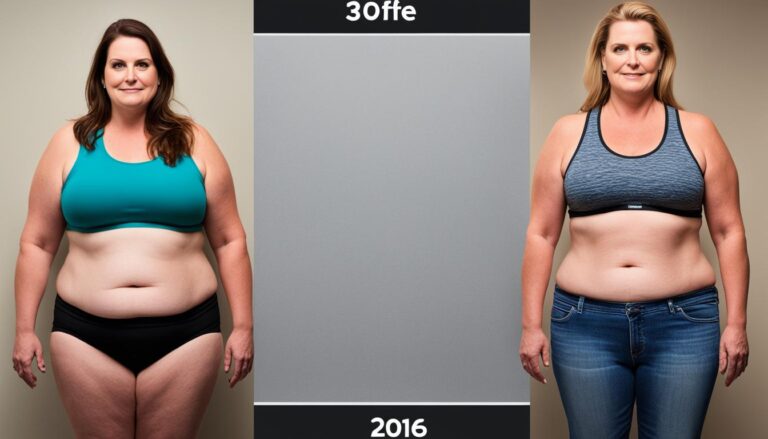Why am I so skinny but soft?
Many individuals often wonder why their body appears slim yet lacks muscular definition, leading to a soft and untoned physique. This puzzling question can be attributed to a condition known as being “skinny fat.” Despite having a naturally thin or slender frame, some people may still have soft muscles and lack firmness. Understanding the concept of “skinny fat” and exploring ways to improve body composition can help shed light on this phenomenon.
- “Skinny fat” refers to individuals who appear skinny but have a high body fat percentage and low muscle mass.
- Metabolically Obese Normal Weight (MONW) is the term used to describe this condition.
- Body Mass Index (BMI) is not an accurate measure of health and fails to consider factors like muscle mass and fitness level.
- Building muscle through resistance training and following a balanced diet are essential for improving body composition.
- Cardio exercise alone is insufficient to address the issue of being “skinny fat.”
The introduction text provides a brief explanation of the phenomenon of being “skinny fat” and highlights the importance of understanding body composition. It also hints at the limitations of the Body Mass Index (BMI) and sets the stage for the subsequent sections that will delve deeper into the topic and provide practical strategies for achieving a healthier and more toned physique.
Understanding the Skinny Fat Phenomenon
The term “skinny fat” refers to individuals who may appear to have a healthy weight but have a high body fat percentage and low muscle mass, which can affect their physique. This condition is known as Metabolically Obese Normal Weight (MONW), and it can be a cause of concern for those facing it. While the commonly used Body Mass Index (BMI) may classify these individuals as within a healthy weight range, it fails to account for the distribution of body fat and muscle mass.
Body fat percentage is a more accurate indicator of health and body composition. It measures the proportion of fat in relation to total body weight. A higher body fat percentage, even in individuals with a normal weight, can indicate an increased risk of health issues such as cardiovascular disease and diabetes. On the other hand, having low muscle mass can lead to a lack of definition and a soft appearance, despite being thin.

To address the issues associated with being “skinny fat,” it is important to focus on building muscle and improving body composition. This can be achieved through resistance training, which helps increase muscle mass and strength. Combining resistance training with a balanced and nutritious diet is key to promoting muscle growth and reducing body fat.
| Strategies for Building Muscle and Improving Body Composition |
|---|
| 1. Incorporate resistance training exercises such as weightlifting, bodyweight exercises, or using resistance bands into your fitness routine. |
| 2. Consume a balanced diet that includes proteins, healthy fats, and complex carbohydrates to provide the necessary nutrients for muscle growth. |
| 3. Avoid highly processed foods and sugary drinks, as they can contribute to increased body fat and hinder muscle development. |
| 4. Incorporate regular cardio exercise to improve cardiovascular health and overall fitness, but remember that alone it may not be enough to address the “skinny fat” condition. |
| 5. Get adequate sleep to support muscle recovery and growth. |
| 6. Keep your workouts varied to promote muscle development and prevent plateaus. |
By following these strategies and adopting a holistic approach to fitness, individuals with the “skinny fat” condition can improve their body composition and achieve a leaner, more defined physique. Remember, the goal should not only be to appear skinny but to prioritize overall health and fitness.
Building Muscle and Improving Body Composition
To address the issue of being skinny but soft, it is crucial to focus on building muscle through resistance training and following a balanced and nutritious diet, while also considering other key factors such as cardio exercise, adequate sleep, and variety in workouts. Simply doing cardio exercise alone is not enough to achieve a lean and toned physique. Resistance training, such as weight lifting or bodyweight exercises, is essential for stimulating muscle growth and increasing muscle mass.
When it comes to resistance training, consistency is key. Aim to incorporate at least two to three strength training sessions per week, targeting different muscle groups each time. This can involve exercises like squats, deadlifts, push-ups, and lunges. Gradually increase the intensity and difficulty of your workouts to challenge your muscles and promote growth.
A balanced and nutritious diet is also crucial for building muscle and improving body composition. Ensure you are consuming enough protein, as it is vital for muscle repair and growth. Good sources include lean meats, poultry, fish, eggs, dairy products, legumes, and tofu. Additionally, prioritize complex carbohydrates, such as whole grains, fruits, and vegetables, for sustained energy during workouts. Avoid highly processed foods and sugary drinks, as they can contribute to excess body fat and hinder progress.
Getting adequate sleep is often overlooked but plays a significant role in muscle recovery and growth. Aim for seven to nine hours of quality sleep each night to optimize your body’s ability to repair and rebuild muscles. Lack of sleep can impede muscle recovery and lead to decreased performance during workouts.
The Importance of Variety in Workouts
Adding variety to your workouts is essential for challenging your muscles in different ways and preventing plateaus. Incorporate different types of exercises, such as strength training, cardiovascular exercises like running or swimming, and functional movements like yoga or Pilates. This not only helps target different muscle groups but also keeps your workouts interesting and enjoyable.
Remember, building muscle and improving body composition takes time and consistency. It may be helpful to track your progress with measurements, photos, or body composition analysis to see tangible results over time. Stay motivated and patient, and remember that being healthy and fit is the ultimate goal, not just being skinny.
| Building Muscle and Improving Body Composition | Key Points |
|---|---|
| Resistance Training | – Incorporate resistance training to stimulate muscle growth – Aim for two to three strength training sessions per week – Gradually increase intensity and difficulty of workouts |
| Balanced and Nutritious Diet | – Consume enough protein for muscle repair and growth – Prioritize complex carbohydrates for sustained energy – Avoid highly processed foods and sugary drinks |
| Adequate Sleep | – Aim for seven to nine hours of quality sleep per night – Lack of sleep can impede muscle recovery and performance |
| Variety in Workouts | – Incorporate different types of exercises – Challenge different muscle groups – Keep workouts interesting and enjoyable |
“Fitness is not about being better than someone else. It’s about being better than you used to be.” – Khloe Kardashian

Ultimately, the goal should be to achieve a healthy and fit body, rather than solely focusing on being skinny, as weight and appearance alone do not accurately reflect an individual’s health and fitness level. It is important to understand that being “skinny fat” is a condition where someone may appear to have a healthy weight, but actually have a high body fat percentage and low muscle mass. This condition, known as Metabolically Obese Normal Weight (MONW), can be identified through a full body composition analysis, which goes beyond the limitations of the commonly used Body Mass Index (BMI).
To improve a “skinny fat” body, it is crucial to focus on building muscle through resistance training. This type of exercise helps increase muscle mass, which in turn, enhances body composition and creates a more defined and toned physique. However, it is important to note that cardio exercise alone is not enough to address this issue. It is essential to follow a balanced and nutritious diet, avoiding highly processed foods and sugary drinks, as these can contribute to higher body fat levels.
In addition to resistance training and a healthy diet, other factors play a significant role in achieving a lean and toned physique. Adequate sleep is vital for muscle recovery and overall well-being. Incorporating variety in workouts, such as trying different forms of exercise and targeting different muscle groups, can help prevent plateauing and keep the body challenged.
Remember, the ultimate aim is not only to be skinny but also to be healthy and fit. By adopting a holistic approach to fitness, considering factors beyond weight and appearance, individuals can strive for overall well-being and improve their fitness level. So, let’s shift our focus to building a healthy and fit body, one that is strong, toned, and full of vitality.
FAQ
Why am I so skinny but soft?
In this section, we will explore the puzzling question of why someone may have a skinny physique but still have soft muscles. We will delve into the concept of being “skinny fat” and the body composition analysis that can determine this condition. Additionally, we will discuss the limitations of using the Body Mass Index (BMI) as a measure of health and how it fails to consider muscle mass and fitness level.
Understanding the Skinny Fat Phenomenon
This section will focus on explaining the concept of being “skinny fat” and the condition known as Metabolically Obese Normal Weight (MONW). We will dive into the significance of body fat percentage and how it can affect a person’s overall appearance. Additionally, we will emphasize the importance of assessing muscle mass and its role in achieving a lean and toned body.
Building Muscle and Improving Body Composition
In this section, we will discuss strategies for improving body composition and gaining muscle tone. We will explore the benefits of resistance training and how it can help build muscle mass. Additionally, we will touch upon the significance of following a balanced and nutritious diet, as well as the importance of incorporating cardio exercise, avoiding highly processed foods and sugary drinks, getting enough sleep, and incorporating variety in workouts.
Striving for a Healthy and Fit Body
In this final section, we will emphasize the importance of aiming for a healthy and fit body rather than solely focusing on being skinny. We will discuss the limitations of using weight and appearance as indicators of health and fitness. By highlighting the significance of overall well-being and fitness level, we will encourage readers to adopt a holistic approach to their physical fitness journey.






